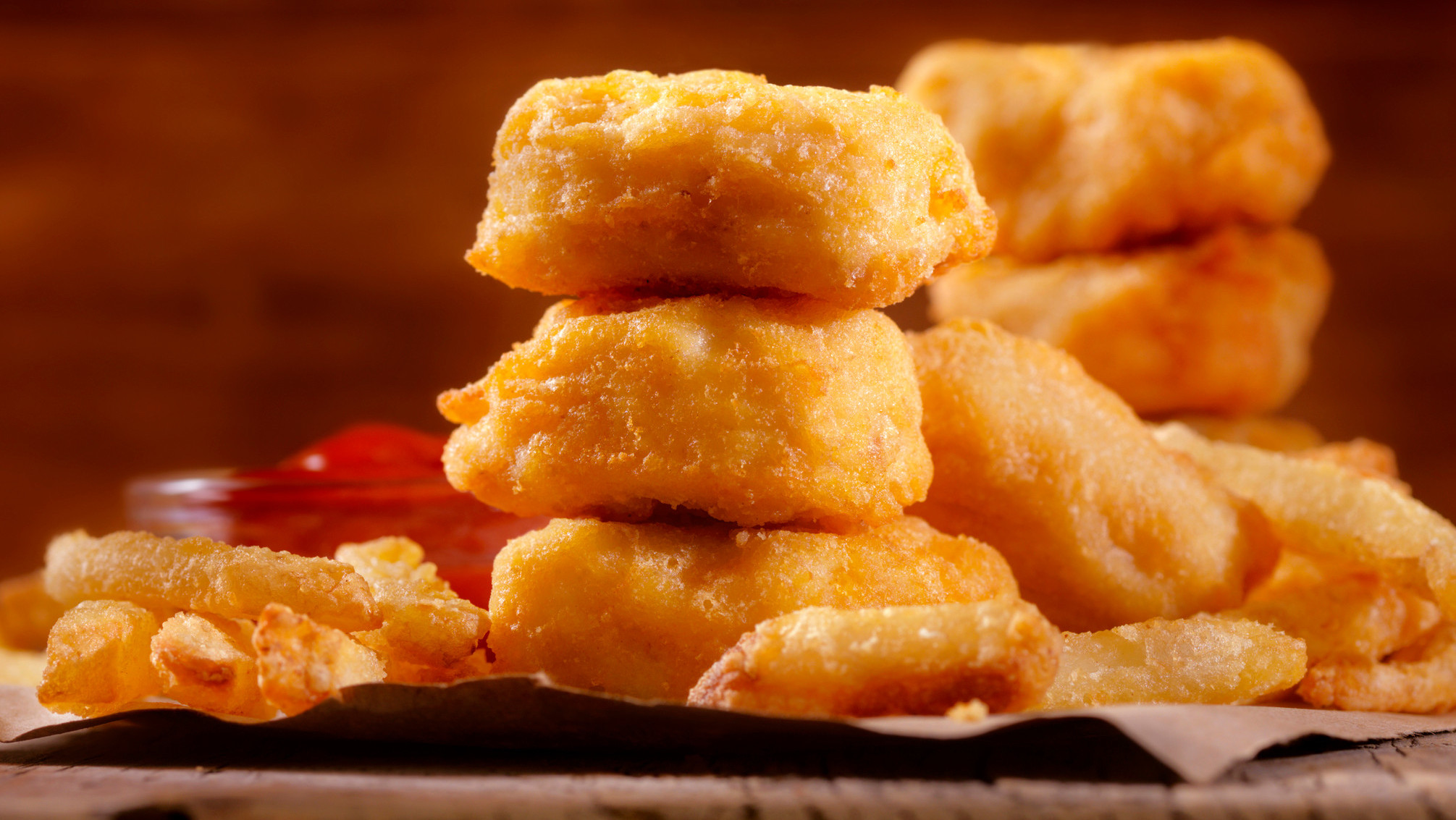What Are Chicken Nuggets Even?
It's hard to believe now, but there was a time when there were no chicken nuggets. I have no idea what parents fed picky children or what picky adults fed themselves before then. Maybe they all just fought over drumsticks.
Chicken nuggets are distinguished from chicken tenders in that they are made from small pieces of chicken or ground-up chicken meat that's been molded into a "nugget" shape. Chicken tenders, on the other hand, are the part of the chicken breast known as the tenderloin—or other parts of the chicken breast cut to look like the tenderloin. (It is not noticeably more tender than other parts of the chicken, in case you were wondering.) This makes chicken tenders, in theory, more nutritious than chicken nuggets, though it's really hard to defend anything that's breaded or battered and then deep-fried as "nutritious."
The question of exactly which parts of the chicken get ground up has haunted chicken nuggets for years. According to some rumors, those parts include eyes, guts, bones, and every other part of the chicken carcass that doesn't get eaten; those "chickens" are hens past their egg-laying prime, and the nuggets are held together by something called "meat glue." According to the National Chicken Council and also Snopes—which, in theory, has no chicken skin in the game—all of this is false.
While chicken nuggets have been made from a substance called mechanically separated poultry (MSP, for those in the know)—salvaged meat that has been separated from the bones by a machine instead of going to waste—the National Chicken Council claims that most are now made from rib meat, technically a section of the breast (think beef or pork ribs, but chicken-sized), mixed with scraps of dark meat from the legs and thighs and skin for extra flavor and texture. All of it is mixed together, like sausage, and then shaped into a nugget. The USDA ruled in 1995 that MSP is safe to eat but that it must be labeled. The most famous chicken nuggets of all, McDonald's Chicken McNuggets, have been made from all white meat since 2003. (I must admit here that I still feel a bit nostalgic for the old dark meat nuggets. They were juicier.)
But what holds all this ground-up chicken meat together? For the answer to this question, we have to go back to the 1950s and the father of the chicken nugget, a Cornell University agriculture professor named Robert Baker. Baker, Emelyn Rude writes in her book Tastes Like Chicken: A History Of America's Favorite Bird, was moved by the plight of the chicken farmers he knew in upstate New York who were barely scraping by after World War II. He decided to find ways to help the farmers sell more chickens for more money, and he retreated to his basement lab with a team of students for several years of experiments.
One of his earliest and greatest achievements was something he called a Chicken Crispie.
[T]he original Chicken Crispie, a bite-sized piece of chicken, coated in batter, and deep-fried. Nothing like it had ever been cooked up before because no one had yet figured out how to keep ground meats together without a skin, nor had they developed a batter that could withstand the dramatic temperature shifts of both freezing and frying. By mixing the chicken with salt and vinegar to draw out moisture and then throwing it in with pulverized grains and a binder of milk powder, the Crispie was able to stick together.
Baker never patented the Chicken Crispie, and in the spirit of academic cooperation he shared his invention in an issue of the Cornell Bulletin in 1963. The same basic idea has been used in chicken nuggets ever since.
Over the years, Chicken Crispies became nuggets and took on a life of their own, especially after McDonald's began selling them in 1983. (That decision was inspired, Rude writes, by falling burger sales and a chance hallway conversation between the head chef and the chairman of the board.) Baker's contribution was all but forgotten, even by his university: when he died in 2006, his official obituary made a much bigger deal about the Cornell chicken barbecue sauce that he also invented. Sic transit gloria.
